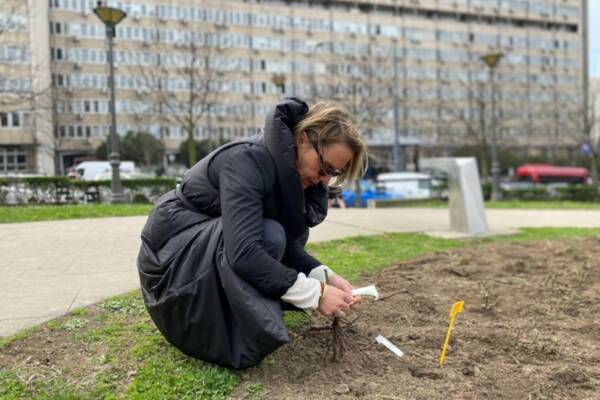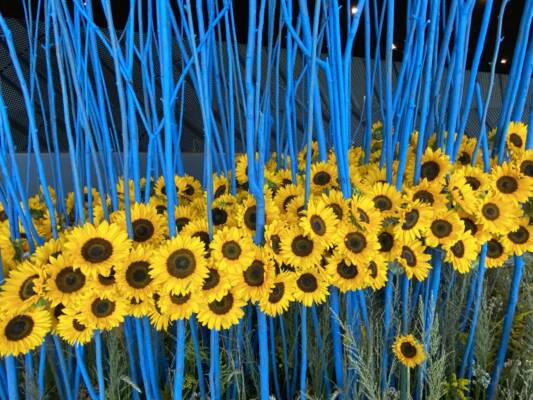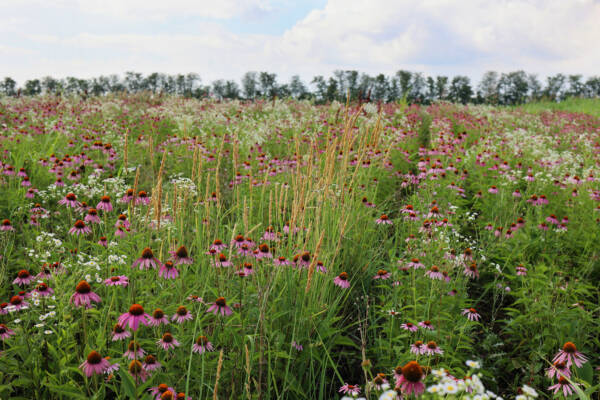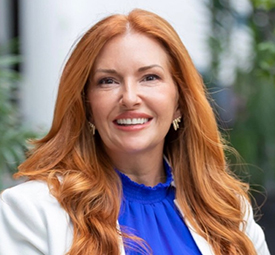The Wholesale Florist Florist Supplier Association (WF&FSA) last month announced Ben Powell has been appointed as President effective October 1st. FloraCulture International sat down with him to discuss the current state of the floral wholesale business in America, the raison d’être of trade associations and future challenges.
FloraCulture International: Ben would you please briefly introduce yourself.
Ben Powell: “I have had the pleasure of working in the floral industry since 1993. My first exposure to the industry was through a year-long consulting project in Colombia with the Boston-based strategy consulting firm, Monitor Group. I became fascinated with the flower industry and joined the spray rose and mini-carnation grower HOSA. I was in charge of HOSA’s Miami business for 5 years before making a leap into the roll-up venture Gerald Stevens. For the past 13 years, I have served on the management team of Mayesh Wholesale Florist where I now serve as President.”
What is the current status of the U.S. floral wholesale industry.
“In 2016, the USA was the third world importer of ornamental products after Germany (including live trees, plants, bulbs, roots, cut flowers and cut foliage). Total import value in 2016 was $2160 million, more than twice of 1997 ($972 million). The wholesale segment of the U.S. floral industry is mature and consolidating. Like the traditional retail florist, U.S. wholesalers have seen a drop in the number of locations and a flat to declining revenue base in the aggregate. That said, progressive wholesalers competing well in the healthier segments are performing well. We believe there are approximately 600 wholesale floral locations in the U.S. Wholesalers employ a variety of strategies to source their products, including direct purchases from growers, importers and exporters. Many wholesale florists use a mix of the aforementioned sources.”
What causes the number of floral wholesalers to decline?
“The principal reason many wholesalers have struggled is the historical dependence on traditional florists, who have been impacted by the decades long gains by supermarkets and mass retailers and by B2C e-commerce penetration by large national players. Wholesalers who fail to respond to these challenges will continue to swim upstream. Those who identify attractive customer segments and serve them well will prosper.”
A good wholesaler brings value to the buyer; a good trade association brings value to its members. How difficult is that?
“WF&FSA has approximately 250-member companies, plus additional 225 branch locations. This includes both supplier and wholesaler members. The association represents more than half of the wholesalers operating in the U.S. No organization – including trade associations – can last for long without bringing value to its constituents. WF&FSA brings value to its membership through education and networking. Our largest event is the Floral Distribution Conference (FDC) held in Miami where we bring together almost 900 industry professionals representing all facets of the wholesale floral marketplace: wholesalers, growers, importers, transportation, logistics, hard goods, greens etc. This year we have been working hard to attract new suppliers to the Conference, including African growers, greens producers and others. We represent a diverse membership and we want to ensure our event reflects that.”
What’s the biggest challenge you feel your WF&FSA faces?
“We need to make sure WF&FSA provides benefits beyond the Annual Conference to ensure our members see the year-long value of joining the association. We provide exceptional networking and education during the Floral Distribution Conference, but we also need to make sure we are providing other services as well. We currently offer multiple research products, additional educational opportunities, blogs, newsletters and more and we want to make sure our members are taking advantage of these services and seeing the value.”
What does the accelerating pace of digitalization/online mean for your business?
“Many florists have been slow to adopt technology. That is a fact. And the same goes for wholesalers. But e-commerce is inevitable. Any company who thinks they can survive without it is making a big mistake. I believe it is one of the key success factors for the future.
Order gatherers have done some damage to traditional retail florists. This disruption has been going on for two plus decades and has been the source of frustration for some people in our industry. But it is a reality. It should be noted, however, that plenty of retail florists have built their business models and marketing in a way that FTD and 1-800-FLOWERS are a non-factor.”
What would you say to someone who questioned the need for wholesalers?
“There will always be people who question the value of the “middle man”. Customers who buy from the “middle man” and suppliers who sell to the “middle man” will even question the middle man’s value. But the fact is that logistics, distribution and the last mile will always play a crucial role in the supply chain. Just in time delivery, robust local inventories, knowledgeable sales professionals, the ability to complete complex wedding and event orders with flowers sourced from multiple regions of the world. These things have value. I don’t see that changing.”
What are the top trade policy and market access concerns for the WF&FSA right now?
“WF&FSA has not, at least in recent times, made trade policy or lobbying of any kind a priority. We have enjoyed mostly free and unencumbered flow of imported cut flowers for decades. Wholesale florists, our customers and the end consumer benefit immensely from free trade and we expect and hope this will continue. While we love domestically grown flowers, I believe our industry should be very clear that unimpeded imports are good for us.”
What is being done to floral consumption?
“Promoting more flower consumption overall is something I feel the entire industry can get behind. Many industry leaders have been discussing collaborative efforts to stimulate primary demand for flowers. I look forward to working hard on this in the months ahead with other associations. In the meantime, it is on all of us in the industry to focus on quality products and to do what we can, especially through social media, to promote that wonderful products we sell.”
How supportive is the current government of the floral sector?
“The current government has been neither helped nor harmed our industry in any direct or material way. We do, however, benefit when the consumer is healthy and spending money and when unemployment is low. Today, that seems to be the case.”
Does America First means that Domestic Production is back on the radar?
“American grown flowers are on our radar 365 days a year. While imports play a valuable role in our industry, we benefit immensely from great domestic flowers. Consumers, retailers and wholesale florists all need our domestic flower industry to remain dynamic and innovative.”
To conclude, tell us something more about your forthcoming conference (Miami. October 18-20.
“WF&FSA made a lot of changes for this year’s FDC. Firstly, we made the event members-only to ensure that all companies doing business with WF&FSA wholesalers have been properly vetted through our membership process. We also built a program to maximize time in the Table Tops to conduct business with suppliers and provide the best networking experience process. Lastly, we have built an exceptional educational panel this year which brings together flowers experts from around the world to discuss the future of the wholesale floral industry. I know I’m personally really looking forward to this year’s event and seeing all it has to offer.”
by Ron van der Ploeg











































